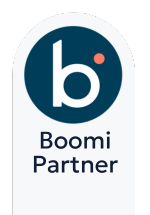Cloud services have emerged as the business foundation. Cloud integration is a significant aspect of this technological revolution, combining data, systems, and programs from both on-premises and cloud-based sources into a single integrated unit. This blog aims to explain the concept of cloud integration, highlighting its significance, types, key components, implementation strategies, real-world applications, challenges, and emerging trends.

Understanding Cloud Integration
Cloud integration, also known as cloud application integration, is the process of linking different cloud-based applications, services, and systems. Its goal is to facilitate smooth data flow, communication, and operation across diverse platforms. Unlike traditional data integration techniques, cloud integration offers real-time access, security, scalability, and cost-effectiveness. The shift from conventional methods to centralized platforms simplifies connections with ready-made connectors, ensuring a seamless interface with existing systems.
Types of Cloud Integration
Hybrid Integration
Hybrid integration bridges the gap between cloud-based and on-premises systems. It allows companies to harness the advantages of cloud services while maintaining connectivity with their existing infrastructure. This solution provides a unified environment for integrating and controlling data and processes across both cloud and on-premises systems, ensuring smooth interoperability.
Multi-Cloud Integration
Multi-cloud integration focuses on connecting and integrating various cloud services from different providers. Many companies utilize a variety of cloud platforms to meet specific requirements. This type of integration enables seamless data synchronization and sharing between different cloud services, preventing the formation of data silos.
iPaaS (Integration Platform as a Service)
iPaaS is a cloud-based integration solution that acts as a platform for connecting and integrating diverse cloud services, on-premises systems, and data sources. iPaaS systems provide workflow automation tools, data transformation capabilities, and a variety of pre-built connectors, streamlining integration and reducing development tasks. The market for iPaaS is rapidly growing and is projected to reach significant revenue by 2026.
Key Technologies and Tools for Cloud Integration
APIs (Application Programming Interfaces)
APIs play a crucial role in cloud integration by allowing developers to access and manipulate data, make calls to services, and perform various operations on different cloud platforms. Managing APIs involves designing and documenting them, implementing access control and security measures, and monitoring and analyzing API performance.
Integration Middleware
Integration middleware serves as a conduit between various cloud services and applications, promoting communication and data interchange. It acts as a central hub for connection management, routing, data transformation, and mapping. Integration middleware platforms include features such as data transformation engines, workflow orchestration capabilities, and message queuing, enabling organizations to implement complex integration scenarios.
Data Gateways
Data gateways are essential components that facilitate the secure transfer of data between cloud-based applications and on-premises systems. They ensure that data can enter and exit an organization’s network securely, complying to data protection and security regulations. Data gateways are essential in hybrid integration because they allow data to move between on-premises and cloud environments.
Benefits of Cloud Integration
- Seamless Operations: Cloud integration enables unified and consistent operations by connecting, mapping, and synchronizing cloud services.
- Real-time Access: Businesses gain real-time access to data, fostering quicker decision-making processes.
- Cost-effectiveness: Cloud integration offers a cost-effective solution compared to traditional integration methods, reducing infrastructure and maintenance costs.
- Scalability: Organizations can scale their operations easily with the flexibility provided by cloud integration.
- Security: Data gateways and API security measures ensure the safe transfer of information between systems.
Challenges in Cloud Integration
While cloud integration brings numerous benefits, it is not without its challenges. Common issues include:
- Data Security Concerns: The transfer of sensitive data between cloud and on-premises environments raises security concerns.
- Compatibility Issues: Ensuring compatibility between different cloud services and platforms can be a complex task.
- Integration Complexity: Implementing and managing complex integration scenarios may pose challenges for some organizations.
- Data Governance: Maintaining data governance and compliance across various platforms can be intricate.
Real-world Applications of Cloud Integration
- E-commerce Platforms: Cloud integration facilitates seamless order processing, inventory management, and customer relationship management in e-commerce.
- Healthcare Systems: Integration of cloud-based electronic health records ensures accessibility and continuity of patient information across healthcare providers.
- Financial Services: Cloud integration streamlines financial transactions, risk management, and regulatory compliance in the financial sector.
Emerging Trends in Cloud Integration
Cloud integration is continuously evolving. Some emerging trends include:
- Edge Computing Integration: Integrating edge computing with cloud services for faster processing of data closer to the source.
- AI-driven Integration: Utilizing artificial intelligence to automate and optimize the integration process.
- Serverless Integration: Embracing serverless architectures for more efficient and cost-effective integration solutions.
Conclusion
The integration of cloud services becomes a crucial factor that promotes cooperation and creativity on various platforms. Businesses can successfully negotiate challenging data integration if they have a solid understanding of its nuances, types, and essential components. Even though there are some difficulties, the advantages greatly exceed them and are driving businesses toward a future in which instantaneous accessibility and flawless connectivity. The role of cloud integration will continue to change as we ride the wave of new trends and shape how businesses function in the digital age.
One of the top suppliers of technology solutions, RESKOM, focuses on providing smooth cloud integration services that are customized to meet your company’s requirements. Our specialists make use of state-of-the-art tools, such as strong APIs, sophisticated integration middleware, and safe data gateways, to guarantee data transfer and functionality across various cloud platforms.


